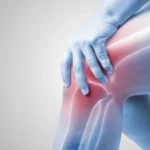

What Are They? Synvisc (Hylan G-F 20) is the brand name for the high-molecular-weight injectable fluid that contains both hylan A and hylan B polymers. The polymers in Synvisc, like most hyaluronic derivatives, are derived from rooster combs and are classified as avian-derived hyaluronic acid (AV-HA).
EUFLEXXA® injectables, on the other hand, is made from a very highly purified product extracted from bacterial cells. Euflexxa is a polysaccharide consisting of a repeating disaccharide of N-Acetylglucosamine and sodium glucuronate that are linked by glycosidic bonds.
What are the Differences?
While viscosupplements from Supartz, Synvisc, and other AV-HA brands are similar in their efficacy, Synvisc offers a one-dose treatment that prevents multiple trips to a doctor’s office. According to the National Institute of Health, AV-HA treatments all appear to relieve pain for between 4 and 14 weeks by restoring both mechanical and biomechanical homeostasis in the joint.
A difference in price gives EUFLEXXA® a bit of an edge. At present, EUFLEXXA® is about 20% cheaper than AV-HA treatments. However, in a free-market economy, the price difference between EUFLEXXA® and AV-HA treatments is likely to switch repeatedly. Both treatments are significantly cheaper than total knee replacement, which can cost over $20,000 in the United States.
Hyaluronic Derivative Treatments for Osteoarthritic Joints
Hyaluronic derivatives, called antirheumatics, are used for treating osteoarthritis and other joint conditions in which the body’s natural lubricant no longer functions as an adequate shock absorber—this is most notable in the arthritic knee.
These pharmaceuticals are used when other treatments fail. Viscous substances, they are injected into the osteoarthritic joint, lubricating it and thereby diminishing friction, inflammation, and the resulting pain.
The real benefit of this treatment is to delay— or even prevent—total knee replacement. This is especially important because artificial knees have a short life span, so a young knee-replacement recipient would be likely to require a second replacement.
The Importance of Sodium Hyaluronate
Sodium hyaluronate is a natural and common polysaccharide that is found in both connective tissue and synovial fluid. The lubricative properties in synovial fluid are important to the smooth functioning of a joint. Because it is both viscous and elastic, sodium hyaluronate injections can help supplement joint lubrication when the natural processes fall short.
Most hyaluronic derivatives come from rooster combs. One hyaluronic derivative in particular— EUFLEXXA®— is different in that it is produced commercially from bacterial cells. Thus, EUFLEXXA® is the first non-avian-derived hyaluronic derivative.
Treatment Considerations
Typically, the treatment prescribed is based on a risk-vs-benefit scale. Cost-effectiveness also comes into play when third-party payers implement cost-containment measures.
Sometimes the cost of these treatments can be misleading. For example, the cost of the single dose Synvisc One is about three times higher than the cost of the same treatment given in three weekly doses. Therefore, the only savings would come from fewer co-pays resulting from fewer office visits.
However, the scientific literature on various joint treatments incorporates a very important factor into the cost: the delay in total knee replacement that can be achieved. The longer the delay, the more the cost savings. It is on this measure that Euflexxia seems to score slightly higher than other hyaluronic derivatives.
Disclaimer: The contents of this article are not to be constructed as medical advise but for informational purposes only. MedicaDepot staff does not review any of this articles for medical validity. Opinions and views expressed in this article are not endorsed by MedicaDepot. Please always consult your doctor for professional medical advise.
Aesthetic products generally refer to a broad category of items designed to enhance or improve one's appearance, often focusing on skincare, beauty, and personal grooming. These products are typically used to maintain or enhance physical attractiveness and may include a wide range of items intended for both professional and personal use. Here are some common types of aesthetic products:
-
Skincare Products: Including cleansers, moisturizers, serums, and treatments designed to address various skin concerns such as acne, aging, hyperpigmentation, and sensitivity.
-
Cosmetics: Makeup products such as foundations, concealers, eyeliners, lipsticks, and eyeshadows used to enhance facial features and achieve desired looks.
-
Hair Care Products: Shampoos, conditioners, styling products, and treatments to maintain and improve the health and appearance of hair.
-
Fragrances: Perfumes and colognes used to enhance personal scent and attractiveness.
-
Dental Care Products: Toothpaste, mouthwash, whitening treatments, and dental floss aimed at maintaining oral hygiene and enhancing smile aesthetics.
-
Personal Grooming Tools: Including razors, electric shavers, trimmers, and grooming kits used for hair removal and personal hygiene.
-
Beauty Devices: Devices such as facial cleansing brushes, LED light therapy masks, and microcurrent devices designed for at-home skincare treatments.
-
Nutritional Supplements: Supplements aimed at promoting skin health, hair growth, and overall well-being, often containing vitamins, minerals, and antioxidants.




